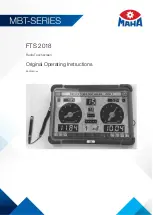
Acessa
®
ProVu System User’s Guide
PL-01-0040
CO 20-131 Revision: C
24
Types and Number of Fibroids Treated in the Study
Variable
N = 135
2
Number of fibroids treated per patient
1 to 29
Mean number of fibroids treated per patient
5
Median number of fibroids treated per patient
4
Number of total fibroids treated within the study
674
Types of fibroids
1
Intramural
347
Subserosal
193
Submucosal
164
Transmural
39
Missing Type
18
Location of fibroids
1
Fundal
148
Mid Uterus
41
Lower Uterine
118
Anterior
235
Posterior
236
Left
144
Right
153
Broad Ligament
2
Missing Location
2
1
A fibroid may be in more than one location or be of more than one type.
2
Full analysis set excludes two subjects who did not meet the bleeding criteria
13.6.
Results of the Pivotal Study
Of the 137 subjects enrolled and treated under this protocol, 124 (90.5%) were considered “evaluable” in terms of their
1) ability to provide a menstrual blood loss assessment, 2) lack of concomitant disease that affects the menstrual cycle,
3) baseline menstrual blood loss was within protocol inclusion limits. The table below shows the subject disposition at
12 months post treatment.
Subject Disposition at 12 Months Post Treatment
n (%)
Total Treated
137 (100%)
Evaluable for Menstrual Blood Loss Using Alkaline Hematin
*
124 (90.5%)
Withdrew prior to 12 months
*
2
Lost to follow up
*
1
Pregnant
3
Menstrual blood loss baseline outside protocol inclusion limits
2
Hashimoto’s Disease
1
Menopause/amenorrhea
4
*The primary full analysis set (PFAS, N=127) for bleeding relief is composed of subjects who withdrew, were lost to
follow up, or are evaluable.
Subject Disposition at 24 and 36 Months Post Treatment
n (%)
Total Evaluable at 12 months
124 (100%)
Withdrew or lost to follow up between 12 and 24 months
3
Withdrew or lost to follow up between 24 and 36 months
2
Pregnant
1
12-24 month reintervention
6
24-36 month reintervention
4
Elective endometrial ablation
1
*3 additional subjects underwent a reintervention after the 36 month visit was completed.
13.7.
Safety
Summary of Treatment-Emergent Adverse Events by Relationship to the Device, Laparoscopic Procedure, and/or
Classified as Serious.
Urinary tract infection, which was reported in 7 of the 137 subjects (5.1%) was the most commonly reported adverse
event during the three year follow up followed by bacterial vaginitis (6/137, 4.4%), influenza (4/137, 2.9%), pharyngitis
(4/137, 2.9%), lower abdominal pain (4/137, 2.9%) and dizziness (4/137, 2.9%).
















































